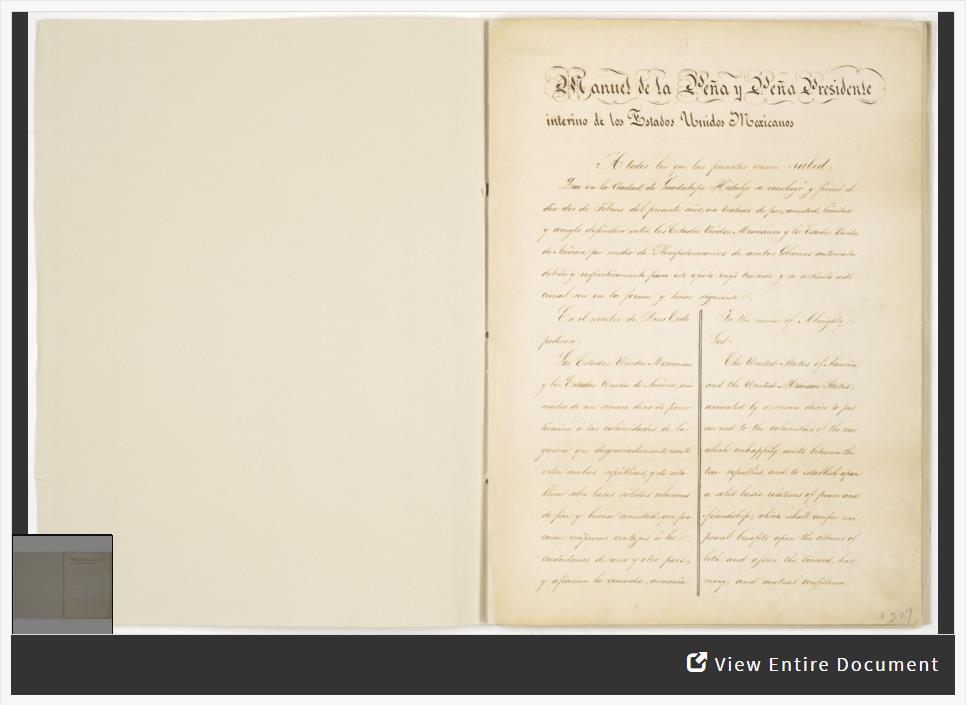El Tratado de Guadalupe-Hidalgo (en Inglés, The Treaty of Guadalupe Hidalgo), que puso un fin oficial a la guerra Estados Unidos-Mexico, fue firmado el 2 de febrero de 1848. Esta actividad requiere que los estudiantes lean y analizen el tratado para explicar el mensaje y el tono del mismo.
Para obtener una versión en Inglés, visite:
The Treaty of Guadalupe Hidalgo.
Suggested Teaching Instructions
Use esta actividad en el estudio de la Guerra Estados Unidos-Mexico y el tema del Destino Manifiesto. Para niños de grados 6-12. Tiempo aproximado necesario es de 120 minutos.
Repase con los alumnos el largo plazo, corto plazo y las causas inmediatas de la Guerra Estados Unidos-Mexico. Después de enumerar estas causas, pida a los estudiantes que den su opinión cómo se pueden resolver estas cuestiones una vez que la guerra se concluye a través del tratado. Si es necesario, definir el término "tratado" para los estudiantes.
Informarle a los estudiantes que van a leer y resumir una sección del tratado. Leer en voz alta la apertura como clase y decirle a los estudiantes que presten atención a la finalidad general y el tono del documento.
Divida la clase en grupos pequeños, dando a cada grupo varios artículos del tratado para resumir las ideas centrales de cada artículo. Después de que los grupos lean y resuman sus secciones, que completen una actividad de "rompecabezas".
Nota: Una
transcripción del Tratado de Guadalupe Hidalgo se encuentra disponible en ourdocuments.gov; el enlace está disponible para los estudiantes en los "Details" para el documento.
- Grupo 1: Los artículos 1 al 4
- Grupo 2: los artículos 5 al 7
- Grupo 3: los artículos 8 al 10
- Grupo 4: Los artículos 11 al 14
- Grupo 5: Los artículos 15 al 19
- Grupo 6: los artículos 20 al 23
Después de discutir los términos del tratado en pequeños grupos, pida a los estudiantes que se concentren en la pregunta que verán cuando hacen clic en "When You're Done":
• Teniendo en cuenta los acontecimientos que llevaron a la guerra con México, crees que los términos negociados en el Tratado de Guadalupe- Hidalgo eran una conclusión justa a esta crisis? ¿Por qué o por qué no? Cite detalles específicos del tratado como evidencia de la justicia o injusticia.
Gracias a Idaliz Marie Ortiz Morales, interna en la Oficina de Estrategias y Comunicaciones en los Archivos Nacionales, por traducir esta actividad esta actividad de The Treaty of Guadalupe Hidalgo.Thank you to Idaliz Marie Ortiz Morales, intern in the Office of Strategy and Communications at the National Archives, for translating the activity The Treaty of Guadalupe Hidalgo into Spanish.




